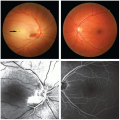Author |
Year |
Assays/Proteins Reported |
Age Groups |
N |
Perlman15 |
1975 |
PT, TT, APTT, fibrinogen, FDP, platelet count, hematocrit, FV, FVIII, plasminogen, hemoglobin |
Healthy infants Small-for-dates infants Postmature infants |
N = 35
N = 26
N = 30 |
Beverley et al.16 |
1984 |
APTT, FII-VII-X, fibrinogen, α2-antiplasmin, platelet count, MPV, megathrombocyte index, plasminogen |
Cord blood Newborns (48 h) |
N = 80 |
Andrew et al.3 |
1987 |
PT, APTT, TCT, fibrinogen, FII, FV, FVII, FVIII, vWF, FIX, FX, FXI, FXII, PK, HMW-K, FXIIIa, FXIIIb, plasminogen, AT, α2-M, α2-AP, C1E-INH, α1-AT, HCII, protein C, protein S |
Day 1 newborn
Day 5 newborn
Day 30 newborn
Day 90 newborn
Day 180 newborn
Adult |
28-75 samples per age group |
Andrew et al.2 |
1988 |
PT, APTT, TCT, fibrinogen, FII, FV, FVII, FVIII, vWF, FIX, FX, FXI, FXII, PK, HMW-K, FXIIIa, FXIIIb, plasminogen, AT, α2-M, α2-AP, C1E-INH, α1-AT, HCII, protein C, protein S |
Premature newborns
(30-36 wk gestation)
Day 1
Day 5
Day 30
Day 90
Day 180 |
23-67 samples per age group |
Andrew et al.4 |
1992 |
PT/INR, APTT, bleeding time, fibrinogen, FII, FV, FVII, FVIII, vWF, FIX, FX, FXI, FXII, PK, HMW-K, FXIIIa, FXIIIs, plasminogen, TPA, PAI, AT, α2-M, α2-AP, C1E-INH, α1-AT, HCII, protein C, protein S (total and free) |
1-5 y
6-10 y
11-16 y
Adults |
20-50 samples per age group |
Reverdiau-Moalic et al.17 |
1996 |
PT/INR, APTT, TCT, FI, FII, FVII, FVII, FIX, FX, FV, FVIII, FXI, FXII, PK, HMWK, AT, HCII, TFPI, protein C (Ag, Act), protein S (free and total), C4b-BP |
Fetuses
19-23 wk gestation
24-29 wk gestation
30-38 wk gestation
Newborns (immediately after delivery)
Adults |
N = 20
N = 22
N = 22
N = 60
N = 40 |
Carcao et al.18 |
1998 |
PFA100
Hb
Platelet count |
Neonates
Children
Adults |
N = 17
N = 57
N = 31 |
Salonvaara et al.19 |
2003 |
FII, FV, FVII, FX, APTT, PT/INR, platelet count |
Premature infants
24-27 wk
28-20 wk
31-33 wk
34-36 wk |
N = 21
N = 25
N = 34
N = 45 |
Flanders et al.20 |
2004 |
PT, APTT, FVIII, FIX, FXI, AT, RCF, vWF, protein C, protein S |
7-9 y
10-11 y
12-13 y
14-15 y
16-17 y
Adults |
124 per age group |
Monagle et al.13 |
2006 |
APTT (four reagents), PT/INR, fibrinogen, TCT, FII, FV, FVII, FVIII, FIX, FX, FXI, FXII, AT, protein C, protein S, D-dimers, TFPI (free and total), endogenous thrombin potential |
Day 1
Day 3
<1 y
1-5 y
6-10 y
11-16 y
Adults |
Minimum 20 samples per age group |
Chan et al.14 |
2007 |
TEG
[R. K. a, MA, LY30] |
<1 years
1-5 y
6-10 y
11-16 y
Adults |
N = 24
N = 24
N = 26
N = 26
N = 25 |
Sosothikul et al.21 |
2007 |
PT, APTT, fibrinogen, TAT, PC:Ac, TF, FVIIa, sTM, vWF (Ag and RCo), D-dimer, tPA, PAI-1, TAFI |
1-5 y
6-10 y
11-18 y
Adults |
N = 19
N = 26
N = 25
N = 26 |
Mitsiakos et al.22 |
2009 |
INR, PT, APTT, fibrinogen, FII, FV, FVII, FVIII, FIX, FX, FXI, FXII, AT, protein C, protein S, APCr, tPA, PAI-1, vWF |
Small-for-growth newborns
Appropriate for growth newborns |
N = 90
N = 98 |
Newall et al.23 |
2008 |
PF4 and vitronectin |
<1 y
1-5 y
6-10 y
11-16 y
Adults |
15 per age group |
Ries et al.24 |
1997 |
TAT, F1+2, PAP, D-dimer |
1-6 y
7-12 y
13-18 y
Adults |
20 per age group |
Boos et al.25 |
1989 |
PIVKA II, FVII, FII, FII:Ag |
Day 1, 2, 3 neonates |
N = 57 total |
|









